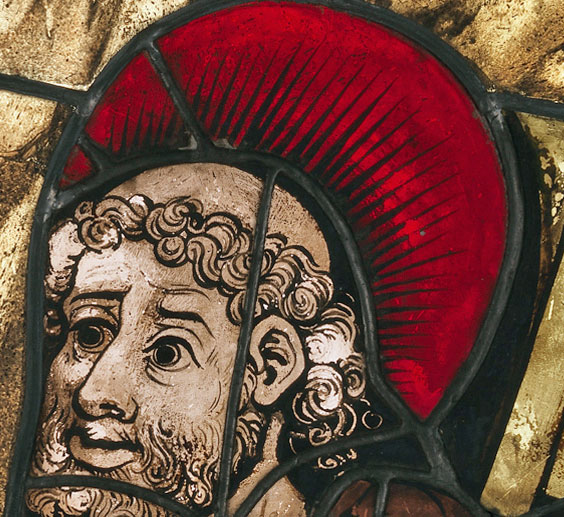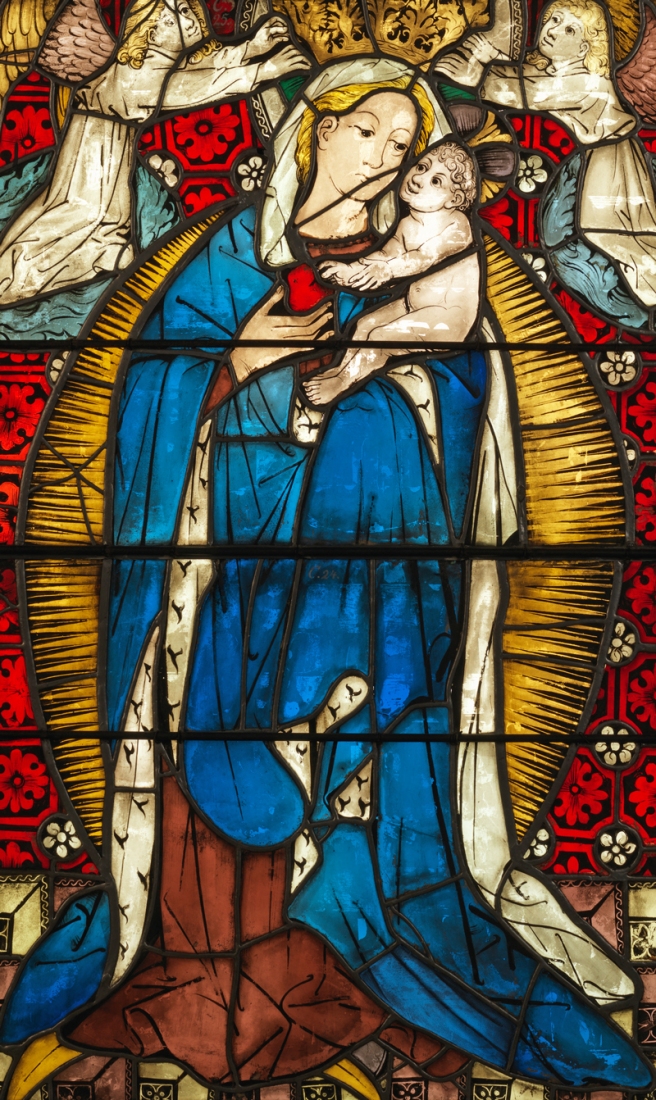The Oxford dictionary describes a halo as “A circle of light shown around or above the head of a saint or holy person to represent their holiness” or as “A circle of white or coloured light around the sun, moon, or other luminous body caused by refraction through ice crystals in the atmosphere”. The words Aura and Nimbus also refer to a halo. It is thought that halos may have originated in or even before Egyptian times. The goddess Sekhmet bears theSolar disk to indicate she is the daughter of the sun god Ra. The beautiful head of the lioness Goddess on display in the Burrell Collection has lost her Solar Disk, although you can see the socket where it would have fitted on the top of her head. The Sekhmet below is from the British Museum.

http://upload.wikimedia.org/wikipedia/commons/d/d8/Sekhmet_%28British_Museum%29.jpg
Many religions have adopted halos to indicated people of very special importance, such as in the standing Budda below, and in the Islamic painting later in the blog.

http://en.wikipedia.org/wiki/File:Gandhara_Buddha_(tnm).jpeg
Halos have risen and fallen in popularity over time, but are well featured in the Boppard stained glass. There are four different types of halo used in the Boppard glass from the Burrell Collection. The simplest halo of all was used for the angels, and consists of a simple yellow disk around the angel’s head, as shown in the example below.

The saints in the Boppard panels have an enhanced halo with radiant lines emanating outwards. A range of colours are used to enhance the designs.

The aureole, sometimes called a mandorla, is a full body halo, and is often used in depictions of the Virgin Mary to symbolise glory. The mandorla is seen in the Virgin and Child panel detailed below.

An alternative style of halo can be seen in the images of the Prophet Muhammad, such as the one on the left below showing the arrival of the Prophet in Jerusalem, from Mir-Heidar’s “Miraj Nameh”, a 15th century illustrated book from Turkey. Here, the halo is in the form of flames, common in Asian art, completely surrounding the Prophet, and around the heads of the other earlier Prophets. In the middle is a small brass statue of Budda in the Metropolitan Museum dating to the late 6th century and made in the ancient region of Gandhara, an ancient kingdom in the Swat and Kabul river valleys and the Pothohar Plateau, in modern-day northern Pakistan and eastern Afghanistan. In this statue, Budda has both a radiant halo and a mandorla. On the right is a statue of Shiva, (or Siva), one of the most important Hindu gods, completely surrounded by a flaming circular halo.

The Boppard Virgin and Child panel, Mary also has a green halo around her crown, a colour associated with life, referring to her status as the mother of Christ.

Jesus usually wears a cruciform halo, a radiant halo with a celtic shaped cross on it to emphasise his sacrifice on the cross and to symbolise the Holy Trinity.

Other halos not used in the Boppard panels include the less common triangular halo and the square halo.

http://www.romeofthewest.com/2008/02/photos-of-saint-peter-church-in-saint.html
In this image behind the altar at Saint Peter Church, in Saint Charles, Missouri, God wears a triangular halo to symbolize the Trinity and the dove (symbol of the Holy Spirit) wears the cruciform halo.

http://www.clas.ufl.edu/users/sterk/women/women.html
In this magnificent mosaic from in the Chapel of Bishop Zeno of Verona located within the church of St. Praessede, in Rome, the Virgin Mary is second from the right, between Saints Praxedes and Pudentiana, and the woman on the left is identified in the Greek inscription as “Theodora, Bishop” (“Episcopa”). Theodora is depicted with a square halo, indicating that the image was made when she was alive. Theodora was widely known to be a devout Christian in the early Church, and was notable for her acts of piety and sanctity.








